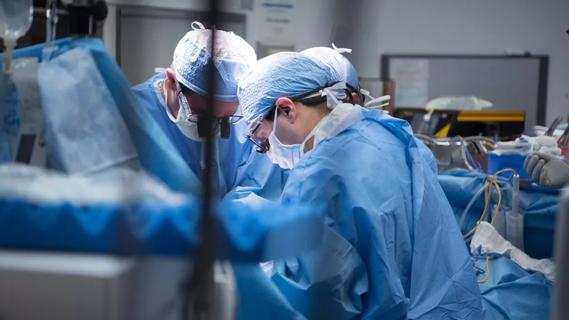Virtual reality is better first step for trainees

By Lori Mahajan, MD, and Marsha Kay, MD
Cleveland Clinic is a non-profit academic medical center. Advertising on our site helps support our mission. We do not endorse non-Cleveland Clinic products or services. Policy
Gastrointestinal endoscopy represents a valuable tool for the diagnosis and treatment of gastrointestinal mucosal disorders. The procedures involved, however, are technically challenging and require considerable training to ensure safe and skilled performance.
Fellowship trainees have traditionally learned to perform endoscopic procedures only in a clinical setting under direct supervision of a trained endoscopist. However, these procedures are uniquely challenging to teach in such an apprenticeship model, for several reasons:
To help ease these training challenges, Cleveland Clinic Children’s has utilized a virtual-reality endoscopy simulator since 2012 to help fellows in its Pediatric Gastroenterology Fellowship Program acquire and practice endoscopy skills in a risk-free environment. This computer-assisted endoscopy simulator (GI Mentor™, Simbionix USA) is a shared resource with Cleveland Clinic’s Digestive Disease Institute, which is ranked among the top 2 adult gastroenterology programs in the nation by U.S. News & World Report. As this type of cutting-edge endoscopy simulator is available to only a few pediatric gastroenterology training centers in the country, it represents a clear benefit of Cleveland Clinic Children’s status as a “hospital within a hospital,” with all the resulting resource support.
The endoscopy simulator is introduced to fellows during the early stages of training. Its simulated environment permits learners to acquire knowledge and build a framework of basic skills through repetitive practice of relevant tasks with the aim of better preparing novices for patient-based training. Trainees are able to rehearse psychomotor and perceptual skills in a risk-free environment so that they attain some degree of proficiency before performing endoscopy in the clinical setting.
The simulator provides trainees who have just begun the hands-on phase of learning with five interactive modules. Two upper endoscopy modules and two colonoscopy modules take fellows through 40 cases arranged hierarchically from a simple diagnostic procedure to advanced therapeutic procedures. Fellows master how to complete a survey of the upper and lower gastrointestinal tract using a forward-viewing videoendoscope. They perform diagnostic and therapeutic procedures in simulated patients and learn to recognize pathology commonly encountered in clinical practice. The final module is an advanced endoscopy module designed to provide skilled endoscopists, fellows and nurses with a training model for emergency gastrointestinal bleeding situations that require urgent therapy. Therapeutic procedures using a variety of appropriate endoscopy tools intended for bleeding pathologies are practiced.
The simulator logs the trainee’s performance by saving data under a unique code. The trainer can then examine each trainee’s progress at any time. The simulator provides objective measures of performance, including:
Such measures can be used to help analyze trainees’ actions, identify errors and potentially improve patient safety.
To date, the endoscopy simulator has been used as a training tool for more than 15 pediatric gastroenterology fellows at Cleveland Clinic Children’s. It provides a singular opportunity to repetitively practice and improve skills and confidence in a relaxed, nonthreatening, nonclinical environment. It will remain a valued, standard part of the first phase of training in our program, and we expect this tool will progressively gain more widespread use in pediatric training programs across the nation.
Dr. Mahajan is Director of the Pediatric Gastroenterology Fellowship Program at Cleveland Clinic Children’s and a staff physician in the Department of Pediatric Gastroenterology.
Dr. Kay is Director of Pediatric Endoscopy at Cleveland Clinic Children’s and Chair of the Department of Pediatric Gastroenterology.

Findings support the safety of the technique

Insights from murine models could help guide care for patients

Reviewing how the drug can be incorporated into care

Insights on guiding treatment decisions

Largest, longest analysis to date shows greater weight loss and fewer diabetes medications needed

Strong patient communication can help clinicians choose the best treatment option

ctDNA should be incorporated into care to help stratify risk pre-operatively and for post-operative surveillance

The importance of raising awareness and taking steps to mitigate these occurrences